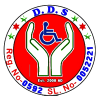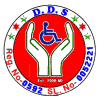Organizing persons with disabilities and their families into self-help groups for mutual support and empowerment.
Promoting inclusive education for children with disabilities, both in formal and non-formal settings.
Providing vocational training and skill development for income generation and self-reliance.
Raising awareness in communities to reduce stigma and promote positive attitudes toward people with disabilities.
Supporting the rehabilitation and reintegration of persons with disabilities into mainstream society.
Ensuring access to assistive devices and mobility aids for improved independence.
Advocating for the human rights of people with disabilities at local and national levels.
Promoting gender equity and addressing the specific needs of women and girls with disabilities.
Delivering health, hygiene, and nutrition services to disabled and disadvantaged families.
Conducting surveys and research to collect data on disability for effective planning and policy advocacy.
Encouraging participation of persons with disabilities in leadership, decision-making, and governance.
Developing and promoting Braille education and accessible learning materials for visually impaired individuals.
Facilitating access to inclusive primary health care, reproductive health, and family planning services.
Preventing school dropouts and increasing educational access for children with disabilities.
Providing counseling, social support, and mental health services for persons with disabilities and their families.
Organizing public campaigns, rallies, and observance of disability-related days to promote awareness and inclusion.
Engaging in environmental improvement programs such as tree planting and clean-up campaigns involving disabled communities.
Offering small grants or loans to disabled individuals for starting small businesses or income-generating projects.
Building partnerships with government and non-government organizations for disability-inclusive development.
Responding to emergencies and natural disasters with relief programs that include people with disabilities.
Encouraging mainstream media to represent people with disabilities positively and accurately.
Establishing libraries and Braille resource centers for visually impaired persons.
Monitoring and reporting on the implementation of disability rights laws and policies.
Supporting accessible infrastructure development, including ramps, signage, and transportation.
Creating safe, inclusive spaces for disabled women and children facing abuse, exploitation, or neglect.
- 01966170775, 01772972143
- tarekhasan.email@gmail.com
- 205/29, Dagair Road, Ward. 66, Demra, Dhaka South City Corporation
Disabled Development Society (DDS)
DDS: A Self-help Groups Organization of Disabled People in Bangladesh Since 2006
If you are a disabled person Be a Member of DDS, if you are able person Donate US
Disability Support
Menu
DDS Support
Menu
Contact
- 205/29, Dagair Bazar Road, Ward No. 66, Dhaka South City Corporation, Demra, Dhaka, Bangladesh
- ddsronjo4677@gmail.com, tarekhasan.email@gmail.com
- 01966170775, 01772972143
© 2025 DDS : Disabled Development Society

